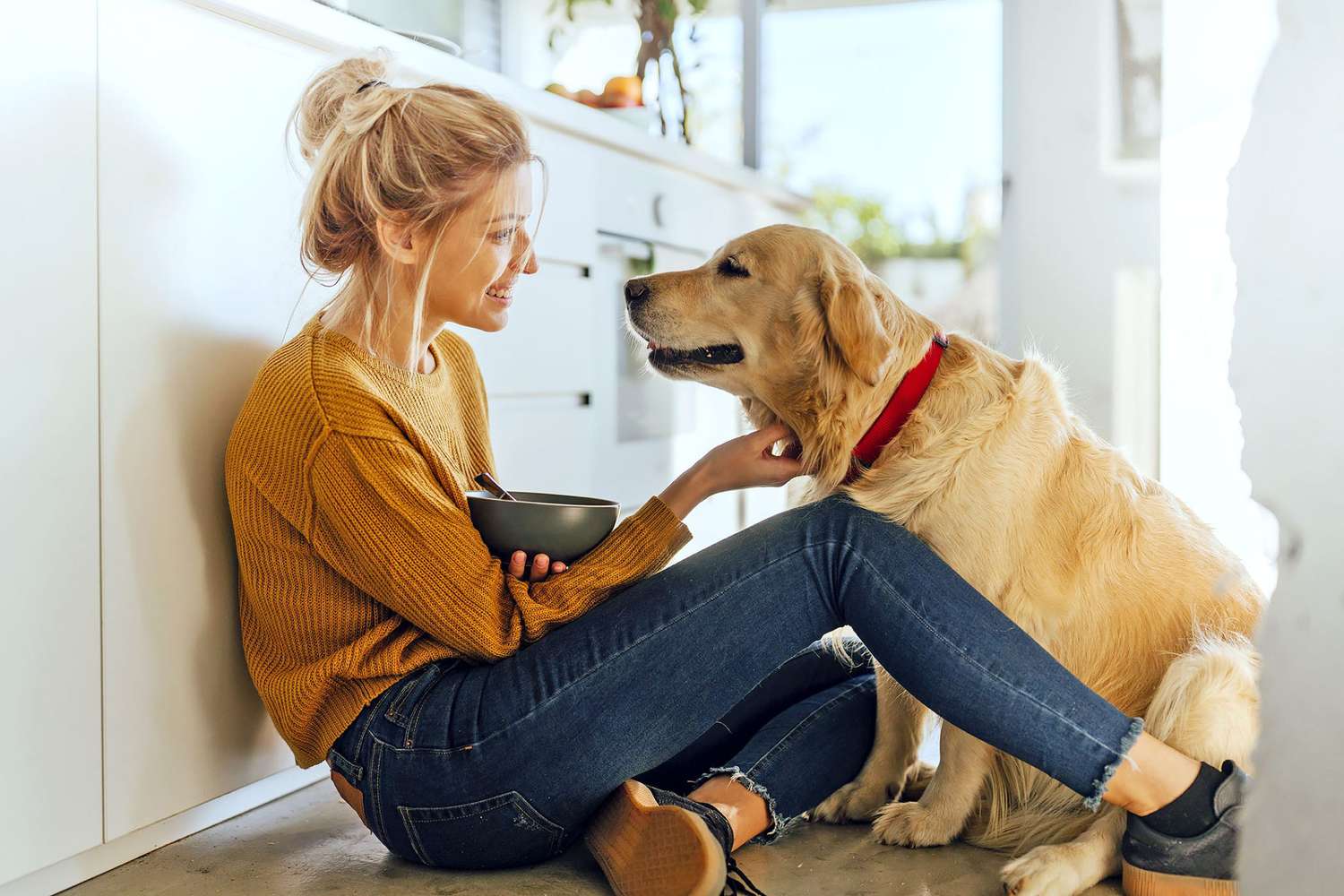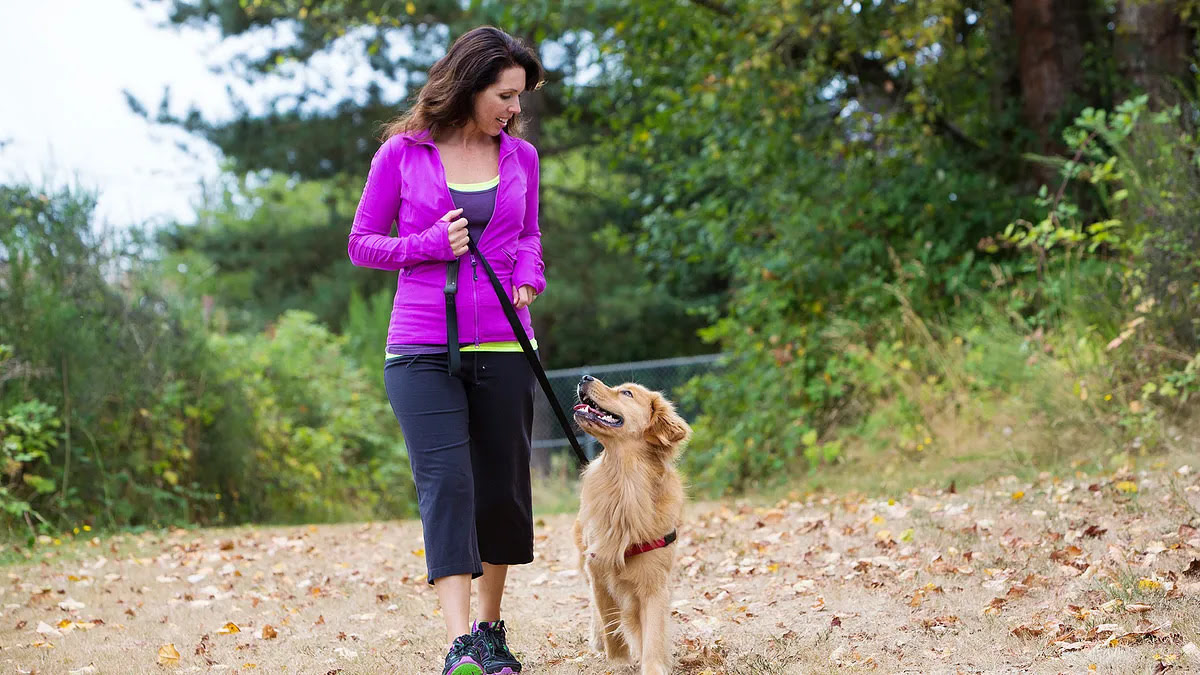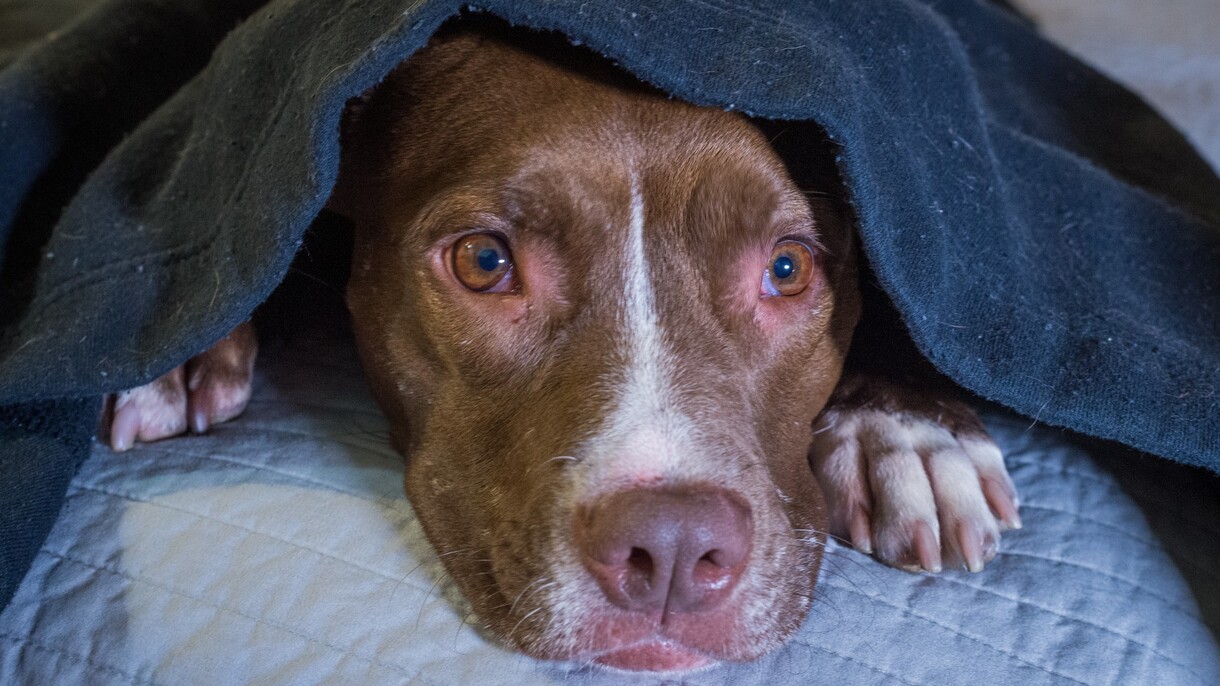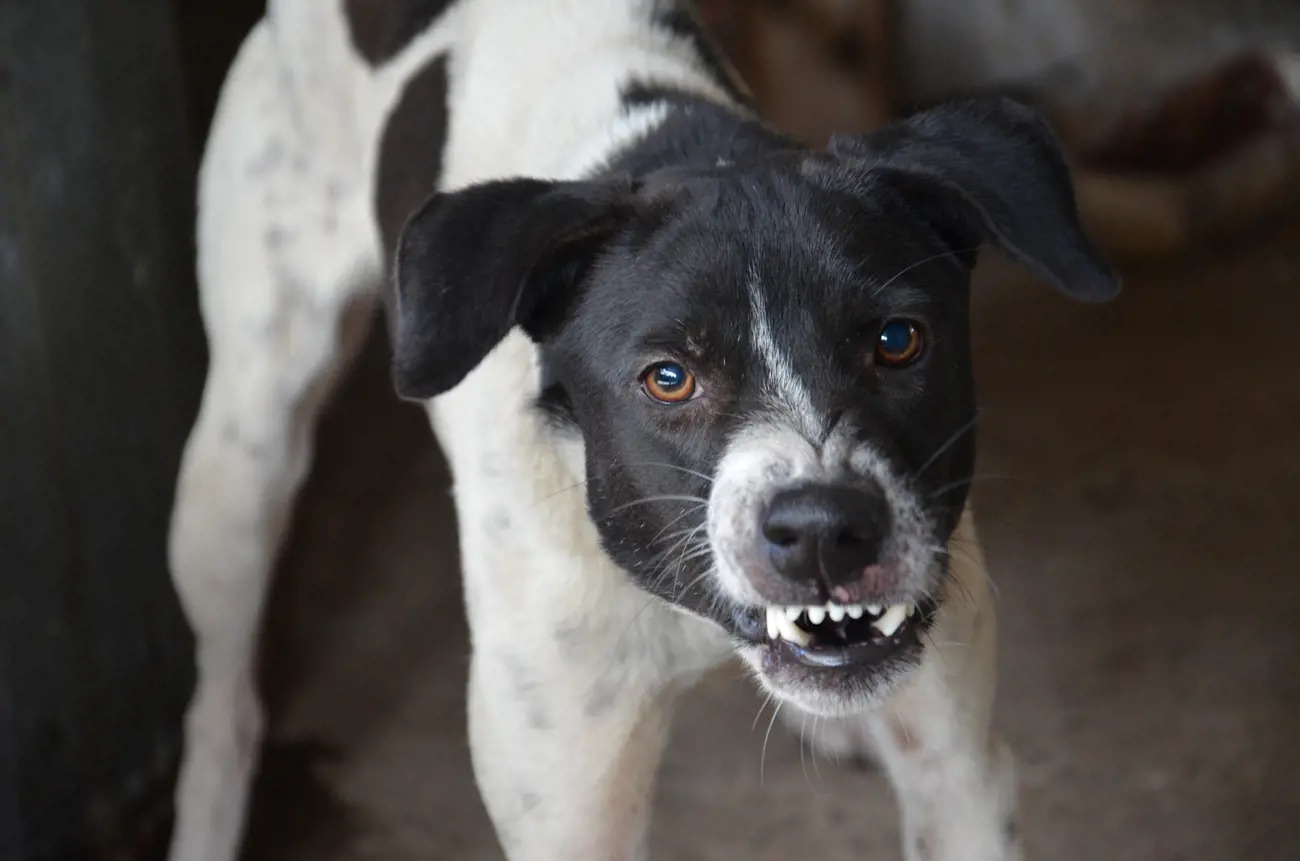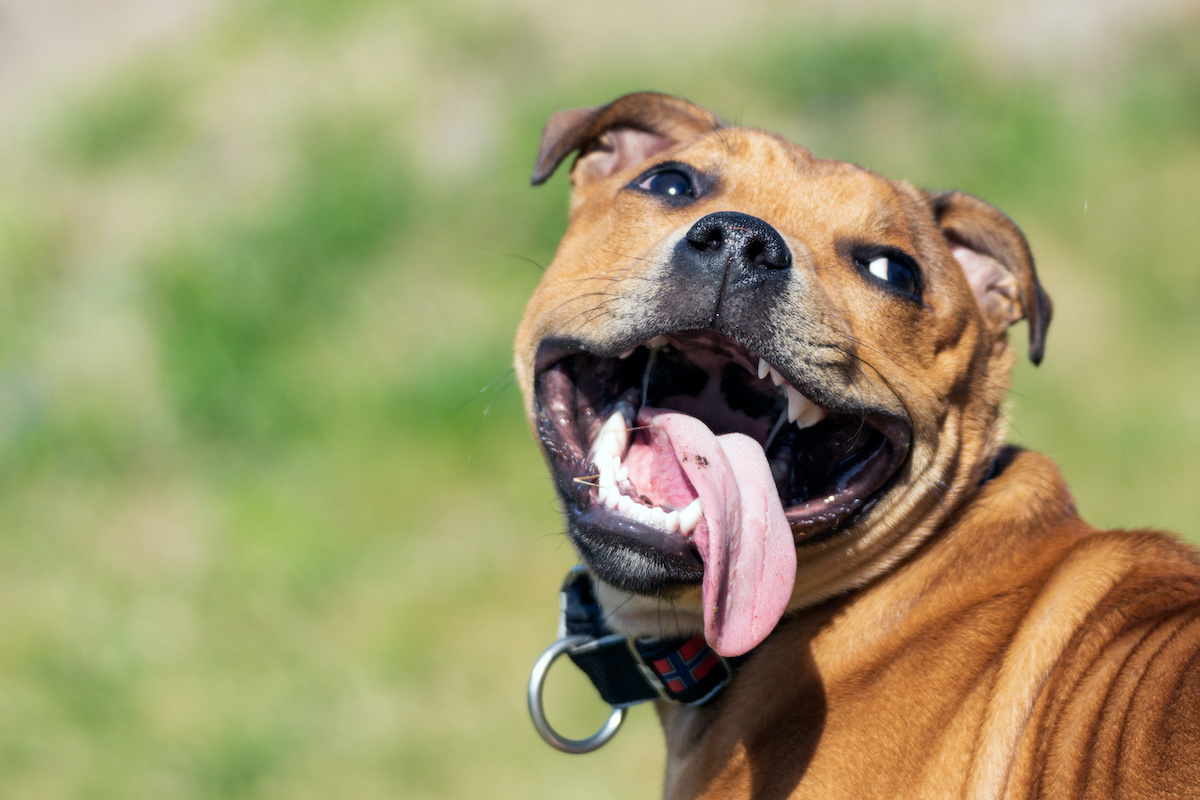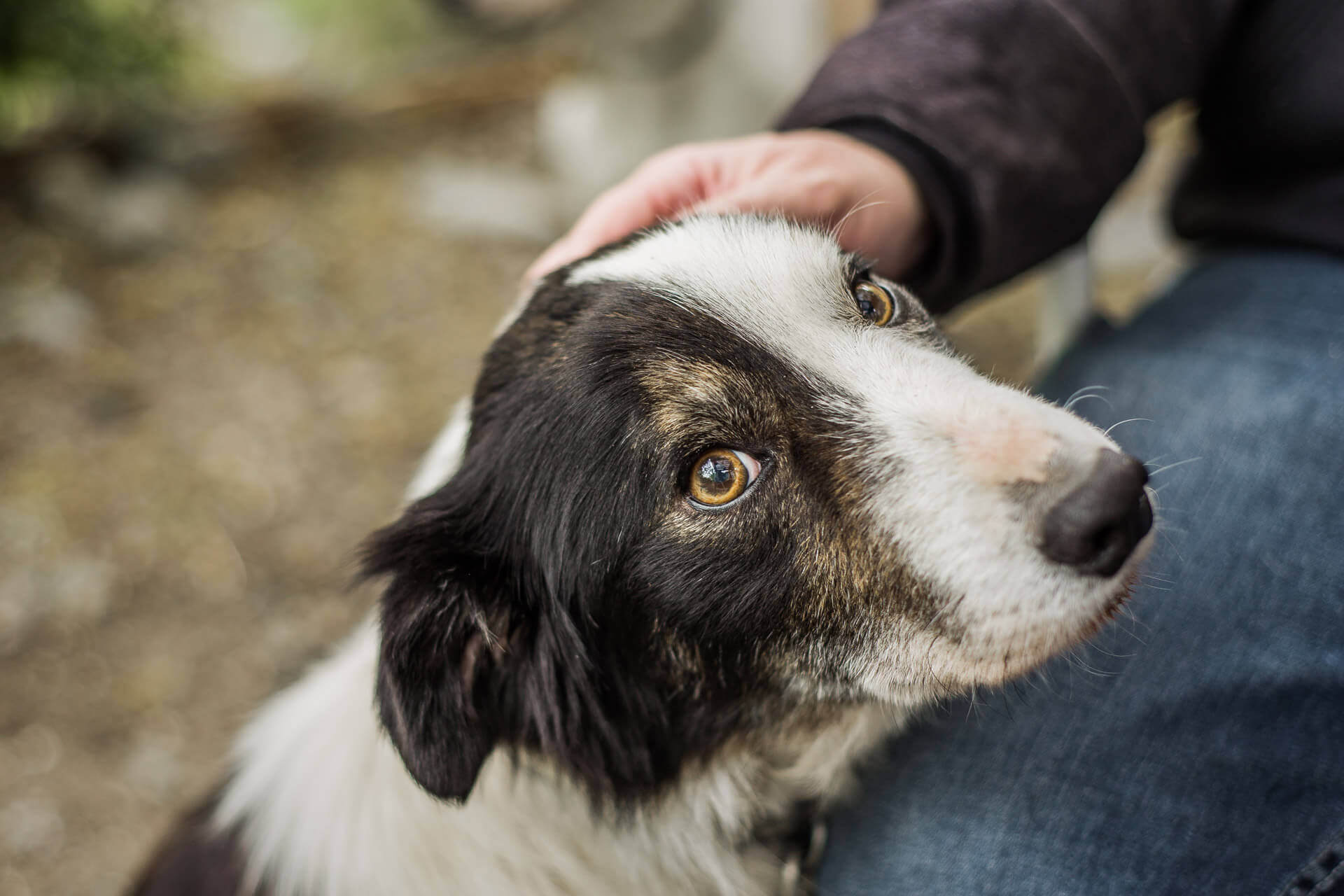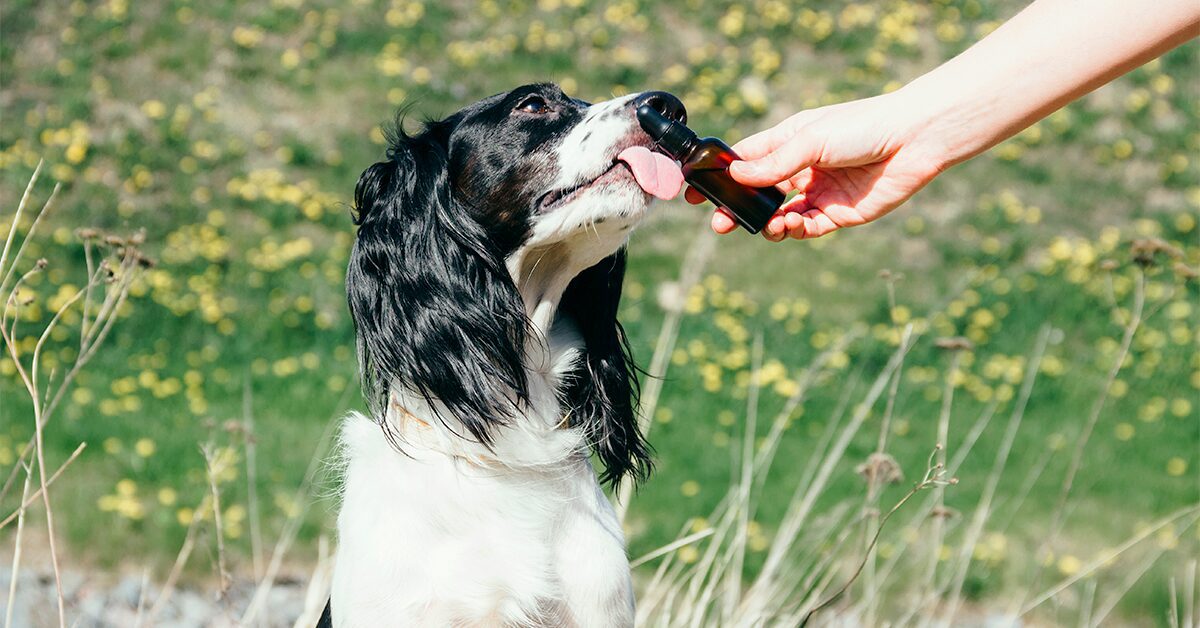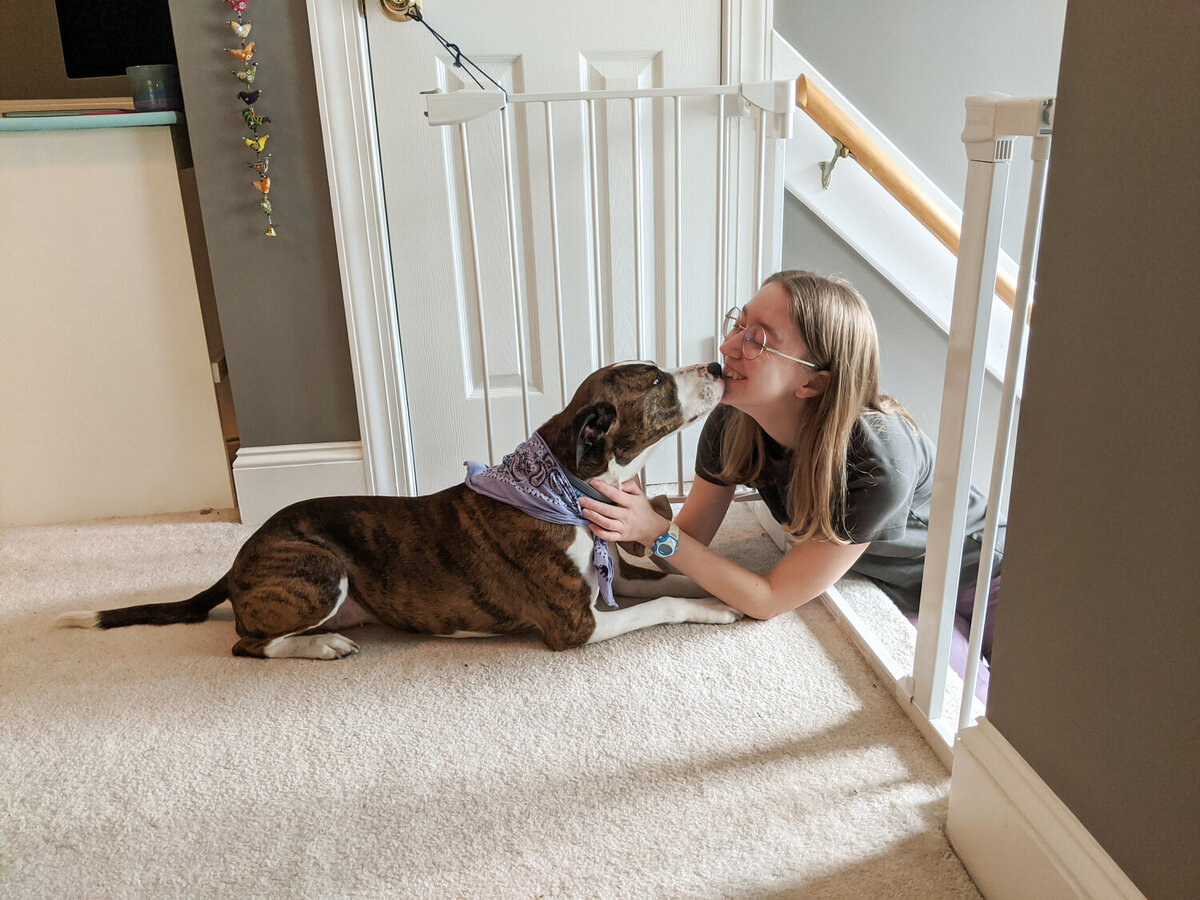Home>Health & Wellness>Behavior & Cognitive Care>How To Calm A High-Anxiety Dog While Walking


Behavior & Cognitive Care
How To Calm A High-Anxiety Dog While Walking
Published: January 30, 2024
Learn effective techniques to calm a high-anxiety dog during walks with behavior and cognitive care strategies. Help your furry friend feel more relaxed and secure.
(Many of the links in this article redirect to a specific reviewed product. Your purchase of these products through affiliate links helps to generate commission for Pawsomeoldies.com, at no extra cost. Learn more)
Table of Contents
Understanding Your Dog's Anxiety
Dogs, like humans, can experience anxiety, and it's essential for pet owners to recognize the signs and understand the underlying causes. Anxiety in dogs can manifest in various ways, such as excessive barking, pacing, trembling, or even aggression. Identifying the triggers for your dog's anxiety is the first step in addressing the issue effectively.
Separation anxiety is a common form of anxiety in dogs and occurs when they are separated from their owners or left alone for extended periods. This can lead to destructive behavior, incessant barking, or attempts to escape. Additionally, dogs can experience situational anxiety, such as fear of loud noises, unfamiliar environments, or encounters with other animals.
Understanding the root cause of your dog's anxiety is crucial for implementing appropriate strategies to alleviate their distress. It's essential to observe your dog's behavior and identify specific situations or stimuli that trigger their anxiety. By recognizing these triggers, you can take proactive measures to help your dog feel more secure and at ease.
Moreover, some breeds are predisposed to anxiety, so it's important to consider your dog's breed characteristics when addressing their anxiety. For instance, breeds such as Chihuahuas, Bichon Frises, and Border Collies are known to be more prone to anxiety compared to others. Understanding breed-specific tendencies can provide valuable insights into managing your dog's anxiety effectively.
In addition to external triggers, underlying health issues can also contribute to your dog's anxiety. Pain, discomfort, or medical conditions can exacerbate anxiety symptoms in dogs. Therefore, it's crucial to consult with a veterinarian to rule out any potential health concerns that may be impacting your dog's emotional well-being.
By gaining a deeper understanding of your dog's anxiety triggers and considering their individual characteristics and health status, you can lay the groundwork for implementing tailored strategies to alleviate their anxiety and promote a sense of calm and security. Understanding your dog's anxiety is the cornerstone of providing the support and care they need to lead a happy and fulfilling life.
Read more: How To Avoid Fleas While Walking Dogs
Preparing for the Walk
Preparing for a walk with a high-anxiety dog requires thoughtful planning and consideration to create a positive and stress-free experience for both you and your furry companion. By taking proactive steps before embarking on the walk, you can help set the stage for a successful outing while minimizing potential triggers that may exacerbate your dog's anxiety.
Familiarize Your Dog with the Walking Route
Introducing your dog to the walking route in a gradual and gentle manner can help alleviate anxiety associated with unfamiliar surroundings. Start by allowing your dog to explore the immediate vicinity of your home, gradually extending the walking distance as they become more comfortable. Familiarizing your dog with the route can instill a sense of security and predictability, reducing the likelihood of anxiety-related behaviors during the walk.
Use Positive Reinforcement and Desensitization Techniques
Incorporate positive reinforcement techniques during the preparation phase to create a positive association with the upcoming walk. Offer treats, praise, and affection as you introduce your dog to their walking gear, such as a harness or leash. Additionally, desensitization exercises, such as gradually acclimating your dog to the sights and sounds they may encounter during the walk, can help reduce their anxiety levels and build confidence.
Consider the Timing and Environment
Choosing the right time for the walk can significantly impact your dog's anxiety levels. Opt for quieter periods when foot and vehicle traffic are minimal, especially during the initial stages of acclimating your dog to outdoor excursions. Similarly, selecting less stimulating environments, such as peaceful nature trails or quiet residential streets, can provide a more serene setting for your dog to gradually adjust to the outdoor environment.
Read more: What Works To Calm Travel Anxiety In Dogs
Create a Calm Pre-Walk Routine
Establishing a calm and reassuring pre-walk routine can help signal to your dog that a walk is approaching, minimizing any sudden surprises that may trigger anxiety. Engage in soothing activities, such as gentle petting or relaxation exercises, to create a tranquil atmosphere before heading out. Consistency in the pre-walk routine can help your dog feel more at ease and mentally prepared for the upcoming excursion.
Maintain a Relaxed Demeanor
As a pet owner, your demeanor and energy can significantly influence your dog's emotional state. Prior to the walk, strive to maintain a calm and composed demeanor, projecting a sense of reassurance and stability to your dog. By exuding a relaxed and confident presence, you can help instill a sense of security in your dog, potentially mitigating their anxiety as you prepare for the walk.
By implementing these preparatory measures, you can lay a solid foundation for a harmonious and anxiety-minimized walking experience for your high-anxiety dog. Taking the time to prepare thoughtfully and attentively can contribute to fostering a positive and enriching bond between you and your beloved canine companion.
Techniques for Calming Your Dog
Implementing effective techniques to calm your high-anxiety dog during walks is essential for fostering a sense of tranquility and security. By employing proven calming strategies, you can help your dog navigate outdoor environments with reduced stress and heightened comfort, ultimately enhancing their overall well-being.
Gentle Touch and Soothing Voice
Engaging in gentle physical contact, such as softly stroking your dog's fur or providing reassuring pats, can convey a sense of comfort and security. Coupled with a soothing voice, your calming presence can serve as a source of reassurance for your dog, helping to alleviate their anxiety during the walk. By maintaining a gentle touch and speaking in a calm, reassuring tone, you can create a supportive environment that promotes relaxation and eases your dog's apprehensions.
Encouraging Positive Distractions
Introducing positive distractions, such as interactive toys or engaging activities, can redirect your dog's focus and help alleviate their anxiety. Consider bringing along their favorite toy or incorporating brief training exercises during the walk to shift their attention away from potential stress triggers. By providing enjoyable diversions, you can help your dog associate the outdoor environment with positive experiences, gradually reducing their anxiety levels and fostering a more positive outlook on walks.
Utilizing Calming Aids
Incorporating calming aids, such as pheromone diffusers or calming sprays, can contribute to creating a serene and relaxing atmosphere for your dog during walks. These aids are designed to emit soothing scents that can help alleviate anxiety and promote a sense of calmness. Additionally, specialized anxiety wraps or vests can provide gentle, constant pressure that may have a calming effect on your dog, offering a comforting sensation akin to a reassuring hug.
Implementing Desensitization Techniques
Gradual exposure to anxiety-inducing stimuli through desensitization exercises can help your dog acclimate to potential triggers encountered during walks. By systematically introducing controlled levels of the stimuli that provoke anxiety, such as encountering other dogs or unfamiliar noises, you can help your dog build tolerance and reduce their reactivity over time. Consistent and patient implementation of desensitization techniques can contribute to diminishing your dog's anxiety responses and fostering a greater sense of ease during outdoor excursions.
Creating Safe Zones and Retreat Opportunities
Establishing designated safe zones or providing retreat opportunities during the walk can offer your dog a sense of security and control. Carrying a portable, familiar blanket or mat can serve as a comforting retreat space where your dog can seek solace if they feel overwhelmed. Additionally, identifying quiet, secluded areas along the walking route where your dog can take a brief respite can help them regain composure and alleviate anxiety before continuing the walk.
By integrating these techniques into your approach to calming your high-anxiety dog during walks, you can cultivate a supportive and nurturing environment that prioritizes your dog's emotional well-being. Through patience, empathy, and a proactive mindset, you can empower your dog to navigate outdoor experiences with increased confidence and reduced anxiety, ultimately strengthening the bond between you and your beloved canine companion.
Read more: What Is A High Protein Diet In Dogs
Using Positive Reinforcement
Positive reinforcement serves as a powerful and effective tool in shaping your high-anxiety dog's behavior and emotional responses during walks. By leveraging positive reinforcement techniques, you can create a supportive and encouraging environment that fosters a sense of security and confidence in your canine companion.
Reward-Based Training
Implementing reward-based training methods involves associating desirable behaviors with rewards, such as treats, praise, or playtime. When your dog exhibits calm and composed behavior during the walk, promptly reward them with a treat or verbal praise. This positive association reinforces the desired behavior, encouraging your dog to replicate it in subsequent outings. Consistency and timeliness in delivering rewards are crucial in reinforcing positive behaviors and instilling a sense of accomplishment in your dog.
Encouraging Desirable Responses
Encouraging desirable responses from your dog, such as maintaining a relaxed demeanor or exhibiting reduced reactivity to triggers, can be achieved through positive reinforcement. When your dog demonstrates signs of calmness and confidence, express your approval through verbal affirmations and affectionate gestures. By acknowledging and reinforcing these positive responses, you can help your dog build resilience and a more optimistic outlook during walks, gradually diminishing their anxiety-related behaviors.
Building Trust and Bonding
Positive reinforcement not only shapes behavior but also strengthens the bond between you and your dog. When you consistently reward your dog for exhibiting calm and composed behavior, you reinforce the trust and connection between you. This trust forms the foundation for a mutually respectful and harmonious relationship, fostering a deeper sense of security and comfort for your high-anxiety dog during walks.
Read more: How To Ease Anxiety In Dogs
Consistency and Patience
Consistency and patience are pivotal in the effective application of positive reinforcement. It's essential to remain consistent in rewarding positive behaviors and patient in guiding your dog through the process of overcoming anxiety. By maintaining a patient and supportive approach, you can instill a sense of predictability and reliability, which are instrumental in reducing your dog's anxiety and building their confidence over time.
Empowering Your Dog
Positive reinforcement empowers your dog by highlighting their successes and progress. As you consistently reinforce positive behaviors, your dog gains a sense of achievement and self-assurance, contributing to a more positive and resilient mindset. This empowerment can lead to a gradual reduction in anxiety-related responses, as your dog becomes more adept at navigating outdoor environments with a heightened sense of security and assurance.
By leveraging positive reinforcement techniques, you can play a pivotal role in reshaping your high-anxiety dog's perception of walks, transforming them into opportunities for growth, confidence, and positive experiences. Through patience, consistency, and a nurturing approach, you can empower your dog to overcome anxiety and embrace outdoor excursions with a renewed sense of calm and assurance.
Seeking Professional Help
Seeking professional assistance is a crucial step in addressing the complex and nuanced needs of a high-anxiety dog. When conventional strategies and at-home interventions yield limited progress in alleviating your dog's anxiety during walks, consulting with a qualified veterinary behaviorist or certified dog behavior consultant becomes imperative.
These professionals possess specialized expertise in understanding canine behavior, cognition, and emotional well-being, allowing them to conduct comprehensive assessments and develop tailored intervention plans tailored to your dog's specific anxiety triggers and responses. By collaborating with a professional who specializes in behavior and cognitive care, you can gain valuable insights into the underlying factors contributing to your dog's anxiety, paving the way for targeted and effective interventions.
A professional behaviorist or consultant can conduct a thorough evaluation of your dog's behavioral patterns, anxiety triggers, and environmental interactions, enabling them to formulate a holistic treatment approach. Through in-depth observations and analysis, they can identify nuanced behavioral cues and emotional signals that may elude untrained eyes, providing a deeper understanding of your dog's anxiety dynamics.
Furthermore, these experts can offer personalized guidance on implementing behavior modification techniques, desensitization protocols, and cognitive interventions tailored to your dog's unique needs. By leveraging evidence-based strategies and specialized knowledge, they can help you navigate the complexities of addressing your dog's anxiety during walks with precision and expertise.
In some cases, professional behaviorists may recommend adjunctive therapies, such as pharmacological interventions or natural remedies, to complement behavior modification efforts. These recommendations are made following a comprehensive assessment of your dog's overall well-being and may serve as valuable components in a multifaceted treatment plan aimed at mitigating anxiety and enhancing your dog's emotional resilience.
Moreover, collaborating with a professional in behavior and cognitive care provides ongoing support and guidance, empowering you with the knowledge and skills to implement effective interventions consistently. Their expertise equips you with the tools to navigate challenges and setbacks, fostering a proactive and informed approach to managing your dog's anxiety during walks.
Ultimately, seeking professional help demonstrates a commitment to prioritizing your dog's emotional well-being and investing in their long-term behavioral health. By leveraging the specialized knowledge and guidance of professionals in behavior and cognitive care, you can embark on a transformative journey toward alleviating your high-anxiety dog's distress and fostering a more positive and enriching walking experience for both you and your beloved canine companion.
